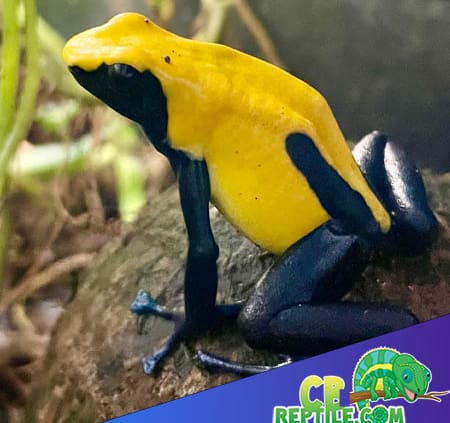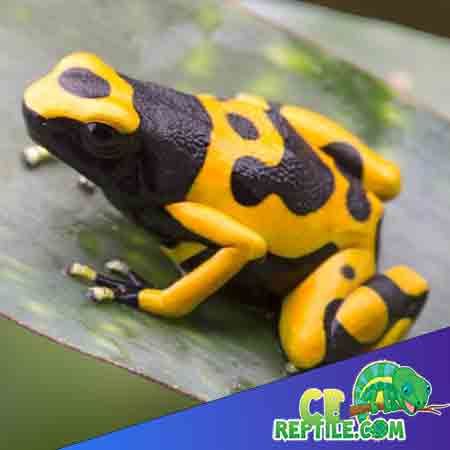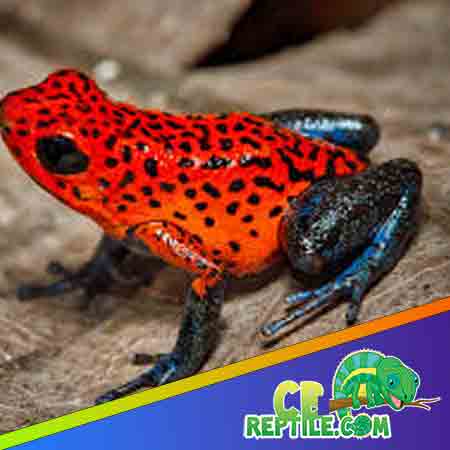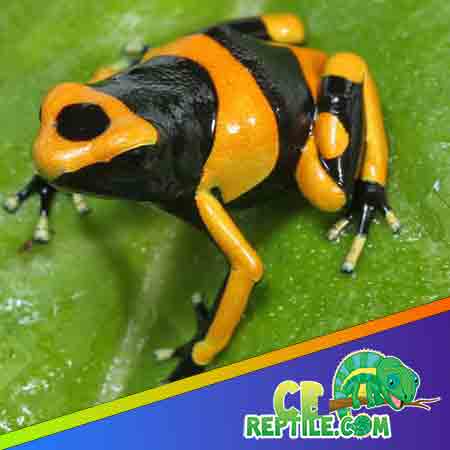
Poison Dart Frog Care & Setup Guide: Habitat, Diet, UVB, Temperature, Humidity & Foggers

Captive-bred poison dart frogs are dazzling, active, and surprisingly beginner-friendly when their environment is set up correctly.
This guide walks through habitat design, lighting, temperature and humidity targets, diet and supplementation, the smart use of a fogger, and pro tips for a thriving bioactive vivarium.
Why CB Reptile? CB Reptile is widely trusted for healthy, captive-bred poison dart frogs, raised with meticulous attention to husbandry, nutrition, and genetics—so you start with strong animals and clear guidance.

Quick Overview
- Temperatures: Generally mid-70s °F during the day (about 72–78°F), with a mild nighttime dip.
- Humidity: High and stable—aim for 70–100% depending on species and vivarium cycling.
- Lighting: Low-to-moderate visible light with access to gentle UVB; provide shaded zones to self-regulate.
- Diet: Small, frequent feedings of tiny insects (e.g., fruit flies, springtails, pinhead crickets) with calcium and vitamin D3 rotation.
- Habitat: Vertical or horizontal planted bioactive tank with ample leaf litter, microfauna, cork/wood hides, and moisture gradients.
Bioactive Habitat Setup

Dart frogs thrive in lush, planted vivaria that mimic the forest floor. A typical build uses a drainage layer (e.g., hydroballs or LECA) beneath a mesh barrier topped with a moisture-retentive substrate blend.
Add leaf litter, cork flats, branches, and live plants (pothos, philodendron, peperomia, bromeliads, and ferns are popular) to create a humid microclimate and lots of visual barriers.
Bioactive cleanup crews—springtails and isopods—help break down waste and maintain soil health, reducing odor and maintenance.
Provide multiple hide areas and climbing opportunities. Even terrestrial species appreciate low perches and bromeliad cups.
Ensure the lid is tight and well-ventilated: you want to hold humidity without creating stagnant air. A front-opening enclosure makes misting and feeding easier and less stressful for the frogs.
UVB & Lighting
While dart frogs often inhabit dim forest understories, access to low-level UVB can support natural vitamin D3 synthesis and overall vitality.
Use a gentle UVB lamp designed for low-light amphibians and position it so that UVB zones are available but not unavoidable.
Create a photoperiod of about 10–12 hours of light daily. Balance UVB with plant-appropriate full-spectrum lighting to keep your foliage vibrant without overheating the habitat.
Temperature Targets
Many dart frog species do best in the mid-70s °F. Sustained heat above the high-70s to low-80s can stress amphibians, so monitor closely with a reliable digital probe at the mid-level of the tank.
If your room runs warm, employ an AC-cooled room, passive cooling, or strategically placed fans that move air across the top (never directly on the frogs).
Nighttime drops into the upper-60s to low-70s are normal for many keepers and can be beneficial when paired with steady humidity.
Humidity: Stable, High, and Naturalistic
Dart frogs require consistently high humidity. Aim for roughly 70–100% with daily cycling—slightly drier after lights on, and wetter after misting.
Plant density, leaf litter, and a fitted top help maintain ambient moisture. Use both a hygrometer for humidity and a thermometer for temperature; amphibians are very sensitive to environmental swings.
Using a Fogger the Right Way
A cool-mist fogger or ultrasonic humidifier is a useful tool to maintain humidity and create dramatic “cloud forest” ambiance.
Run it on a timer or humidity controller to avoid constant saturation. Pair fogging with regular hand-misting or an automated misting system that delivers fine droplets to leaves and bromeliad cups.
Always use distilled or RO water in foggers to minimize mineral buildup and keep equipment clean; sanitize tubing and reservoirs regularly to prevent biofilm.
Diet & Supplementation
Feed small, moving prey items sized appropriately for each frog. Staples include melanogaster or hydei fruit flies, springtails, and pinhead or micro crickets.
Frequent, smaller feedings (4–6 times per week for many setups) keep activity high and reduce leftover prey wandering the enclosure.
Dust insects with a calcium supplement and rotate with a quality multivitamin (with D3 if you are not providing UVB).
Maintaining a diverse, gut-loaded micro-invertebrate culture—especially springtails—is a gamechanger in bioactive tanks.
Water & Cleanliness
Amphibian skin readily absorbs contaminants, so prioritize clean, dechlorinated water for misting and fogging.
Provide shallow water features or bromeliad cups with frequent refreshes. Remove uneaten prey after feeding windows, and spot-clean leaf litter as needed.
Good air exchange, healthy plants, and an active cleanup crew will keep odors low and microclimates stable.
Handling & Observation
Dart frogs are best enjoyed visually. Limit handling to essential maintenance and use wet, clean, gloved hands when necessary.
Stress from frequent handling can impact appetite and immune function, so adopt a “look, don’t hold” philosophy.
Provide visual cover so frogs feel secure; you’ll actually see them more when they have safe places to retreat.
Common Mistakes to Avoid
- Allowing temperatures to creep too high for extended periods.
- Running foggers constantly without cycling, leading to stagnant air and overly wet conditions.
- Under-supplementing feeder insects or offering prey that is too large.
- Using tap water with chlorine/chloramine for misting or fogging.
- Insufficient plant cover or leaf litter, which reduces security and microfauna activity.
Why Get Your Frogs from CB Reptile?
Starting with robust, captive-bred animals sets you up for success. CB Reptile focuses on healthy, well-started poison dart frogs, clear husbandry guidance, and ethical breeding practices.
Their expertise helps you match species and morphs to your skill level and environment, and they provide the supplies and advice to make your bioactive vivarium flourish.
FAQ
How big should the enclosure be?
Many keepers start around 18×18×18″ for a pair or small group, but more space allows richer landscapes and more stable microclimates.
Do dart frogs need UVB?
Low-level UVB is beneficial when balanced with shaded areas. If you forego UVB, ensure your supplement rotation includes D3.
How often should I feed?
Offer small amounts 4–6 days per week, adjusting based on body condition and activity. Remove excess prey after feeding windows.
Can I keep different species together?
Mixing species is generally discouraged; it complicates diet, disease risk, and breeding. Stick to species-only groups.
Ready to begin with healthy, captive-bred frogs from a trusted source? Explore
dart frogs for sale
from CB Reptile and build your dream bioactive vivarium with confidence.
